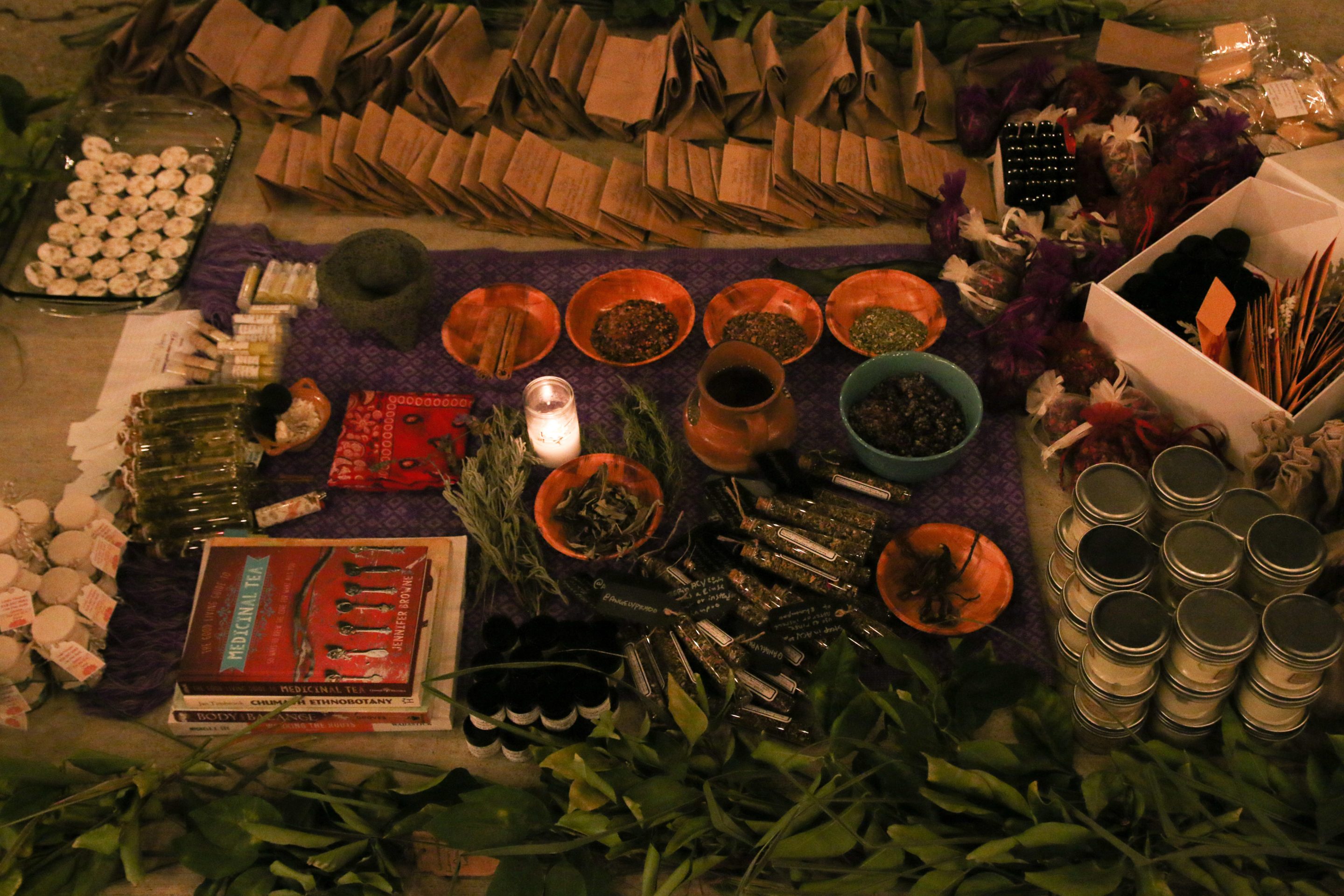[dropcap size=big]I[/dropcap]t’s a chilly night by Southern California standards in the backyard of this East L.A. home, but no one seems uncomfortably cold. Students sit in a large circle, bundled up in whatever hodge podge of winter attire they own. Two friends chatter quietly, sharing a fuzzy Lion King blanket. Classic oldies like, “In the Still of the Night,” warm the air with nostalgia.
The instructor, Berenice Dimas, begins with a blessing. She calls everyone’s ancestors into the space and then blows smokes from a goblet-like clay vessel over the students’ open palms.
Not sure if I too will be receiving a blessing, I stand anyways. Dimas motions for my hands and bathes them in smoke. All anxieties I have about infringing upon their intimate gathering melt away, I am welcomed.
Dimas is the founder of Hood Herbalism, an education project that teaches indigenous practices of medicine making to communities of color. The inspiration for this came when she was teaching 9th grade health in Oakland and asked her students to document family home remedies. “I realized I want to see this more…to have herbal classes, kind of like what I'm experiencing, but in the community that I come from,” Dimas recalls.
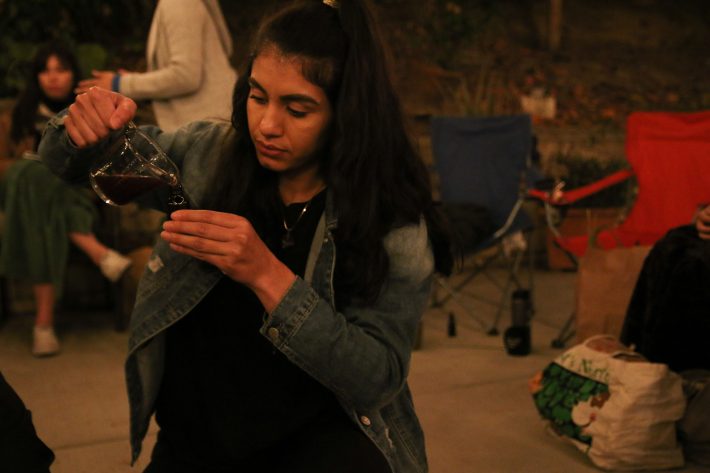
In 2016, when the El Monte native relocated back to Los Angeles, she put her intentions into action.
Currently Hood Herbalism hosts both pop-up and weekly workshops that are fee-based, with payment options for those needing financial assistance. You can find these classes advertised on her website and social media account; however, details are left purposefully obscure.
In an age of over-sharing, Dimas practices the power of withholding information. “I don't want to share all the secrets,” she chuckles.
Instead, she uses social media to provide a glimpse, “I trust that I put enough information out there for those that are curious, and curious enough that they'll apply.” This may seem like a strange business model, but with more than 34,000 followers on Instagram she obviously has no problem filling the 15 seats of her ongoing courses.
Being among the intrigued myself, I asked Dimas if I could sit-in. Part science experiment, part mystical healing, part community building, what I experienced is certainly not your typical class.
In this last session of the winter remedies series everyone comes bearing gifts; their culminating project is to make medicine for each other. One-by-one students hand-out teas, oils, balms, salves from the altar like arrangement in the center of the circle. Each student takes a turn explaining their medicine, but also what this class has meant to them.
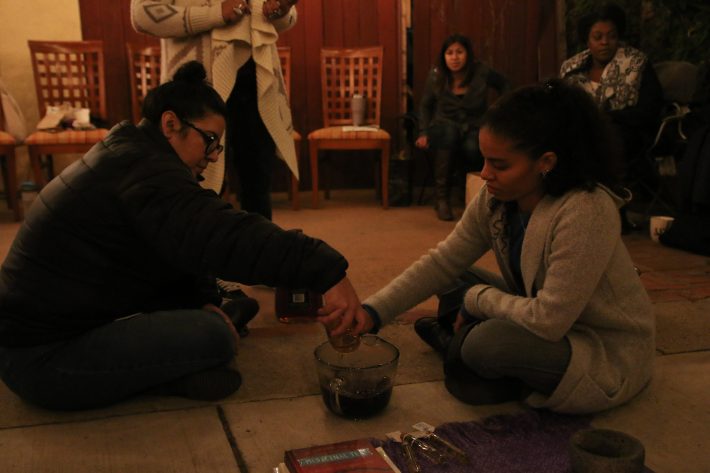
Linda Rodriguez, mother of three, confides in her classmates. “I went to Herbs of Mexico to buy the lavender and the peppermint and when I opened them, I got so emotional from how beautiful they smelt. It made me really thankful for being here and for learning this and getting touch with Mother Earth. This year has been really hard for me emotionally.”
“As part of the Filipino diaspora,” Emily Bautista explains as she passes out guava leaves from her parents’ tree, “It’s been really important for me and my decolonizing journey to learn how to connect with the plants but also with my ancestors who have been connected to the land.”
The second half of the class is more of a straightforward lesson, but still very much interactive.
Tonight they are making elderberry syrup. Dimas hands out the recipe which lists the ingredients and all of their healing properties. At first, I am surprised by medical jargon like “emmenagogue” and “expectorant,” which means a medicine that helps eliminate phlegm. But what did I expect, this is not some bogus class, Dimas obviously knows her stuff.
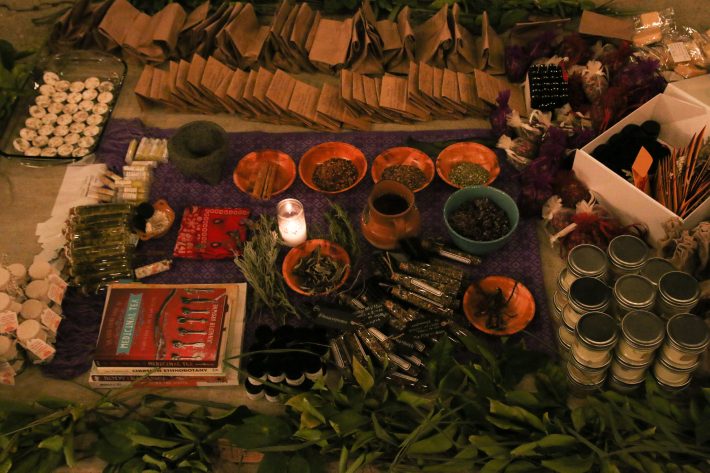
Bowls of ingredients: leaves, berries, bark and spices are passed around for closer examination. Dimas encourages everyone to try osha, a very bitter yet effective antiviral root. The Native American nickname for this is “bear root.” Dimas explains the story behind the name with a childlike excitement, “Bears are so smart, after the winter time they look for this root and dig it up and they eat it and it helps kill all their microbes before the eat their first meal. Isn’t it cute?”
In these moments she shines as a teacher, nerding out on these tangential tidbits with an infectious delight.
Yet, Dimas makes clear her teachings are not all-encompassing. When we speak a few weeks later, she tells me: “What I present is a combination of what I learned in herbal school, what I know from my relationship with plants, and what I've learned from my growing up with my mom.”
In this Dimas is well aware she cannot answer questions about indigenous practices worldwide, but she is confident about what she can provide. ‘What I can do is offer a space that is supportive for you to explore those things on your own,” she says.
RELATED: Everyone Stop Driving to Lake Elsinore to Take 'Super-Bloom' Selfies, City Says
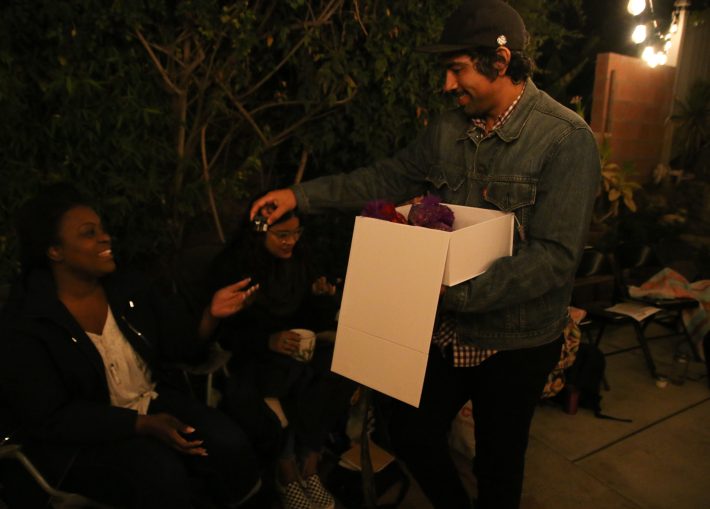
[dropcap size=big]F[/dropcap]or Iris Salazar, who had been experiencing post-concussive symptoms for years, as well as anxiety and depression, this class gave her an opportunity to find alternative and inexpensive options. “At least I know that if I can’t afford medical care … that I can find relief in nature,” she tells me during our phone conversation.
On the the other hand, “It doesn’t mean we throw Western medicine out the window,” Jerusaliem Gebreziabher, says when speaking to me about the class’ impact. “But we should be reevaluating how we are healing our bodies … But looking inward, like what are the healing arts I already have in my culture.”
A general sense of reconnecting with nature and ultimately one’s roots was a shared experience amongst students whose cultural ties range from Guatemala to Ethiopia. Though some students referred to this as decolonizing, it is not a topic that is lectured on explicitly by Dimas.
This ties into the big lingering question, why POC only? Yes, meaning people of color only and yes, meaning no white people. In answering this Dimas replies with a straight-face, “I don't feel apologetic about it because there's so many spaces for white folks to learn about herbalism and so I'm not saying you can't have access to herbalism I'm saying this is a space for us.”
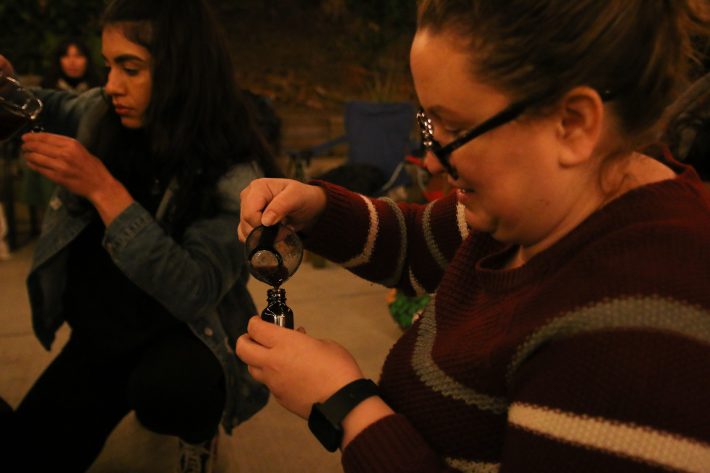
Dimas was trained at a POC led herbalist school Ancestral Apothecary, but asserts that the vast majority of programs and literature out there are dominated by white practitioners and scholars.
While there is currently no statistical report documenting the lack of indigenous representation in herbalism (and perhaps there should be one), the appropriation of indigenous practices is no big secret and is obviously not consigned to scholarship. Just last year Sephora tried to release their embarrassingly insensitive “bruja box” that came complete with a white sage smudge stick.
In the rampant newage wellness culture that is Los Angeles, Hood Herbalism exists to serve as more than a superficial Instagram ready remedy. Hood Herbalism speaks to a larger truth, of a need for “safe spaces,” in herbalism.
“We are healing our collective trauma by learning this medicine and being able to sustain ourselves – this is our resistance,” Salazar says.
RELATED: A Swarm of a ‘Billion’ Painted Lady Butterflies Is Migrating Through Southern California
RELATED: The Best Mexican Food in South Central L.A. ~ The L.A. Taco Guide
